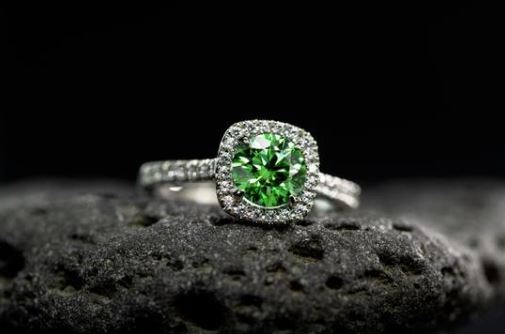Congratulations on reaching this exciting milestone in your life! You’ve found the one, and now it’s time to embark on the enchanting journey of selecting the perfect engagement ring.
This symbol of love and commitment deserves careful consideration, and we’re here to guide you through every sparkling detail.
Understanding the 4 Cs: The Foundation of Diamond Quality
When it comes to choosing a diamond engagement ring, the 4 Cs are your best friends. Let’s dive into what each of these crucial factors means for your ring selection:
1. Carat: More Than Just Size
Contrary to popular belief, carat is not about the size of the diamond, but its weight. One carat equals 0.2 grams, about the weight of a paperclip. While a higher carat weight often means a larger diamond, two stones of the same carat can appear different in size due to their cut.
Pro Tip: If you’re on a budget, consider a diamond just shy of the next carat weight (e.g., 0.9 carats instead of 1 carat). The visual difference is minimal, but the price difference can be significant.
2. Cut: The Sparkle Factor
The cut of a diamond is arguably the most important of the 4 Cs. It refers to how well the diamond has been shaped and faceted, affecting its ability to reflect light. A well-cut diamond will sparkle brilliantly, while a poorly cut one may appear dull, regardless of its other qualities.
Grades of Cut:
- Excellent
- Very Good
- Good
- Fair
- Poor
Aim for ‘Excellent’ or ‘Very Good’ for maximum brilliance.
3. Colour: From Icy White to Warm Hues
Diamonds are graded on a colour scale from D (colourless) to Z (light yellow or brown). While D-F diamonds are the most valuable, G-J diamonds can offer excellent value, as the colour difference is often imperceptible to the naked eye.
Colour Grade Scale:
- D-F: Colourless
- G-J: Near Colourless
- K-M: Faint Yellow
- N-R: Very Light Yellow
- S-Z: Light Yellow
4. Clarity: Nature’s Fingerprint
Clarity refers to the presence of inclusions (internal flaws) or blemishes (surface flaws) in a diamond. The clarity scale ranges from Flawless (no inclusions or blemishes visible under 10x magnification) to Included (inclusions visible to the naked eye).
Clarity Scale:
- Flawless (FL)
- Internally Flawless (IF)
- Very Very Slightly Included (VVS1 and VVS2)
- Very Slightly Included (VS1 and VS2)
- Slightly Included (SI1 and SI2)
- Included (I1, I2, and I3)
VS1 and VS2 often provide the best value, as their inclusions are typically not visible to the naked eye.
Beyond the 4 Cs: Other Factors to Consider
Ring Setting Styles
The setting of your engagement ring can dramatically affect its overall appearance and how the centre stone is showcased. Here are some popular styles:
- Solitaire: A timeless classic featuring a single stone.
- Halo: A centre stone surrounded by smaller diamonds for added sparkle.
- Three-Stone: Symbolizing past, present, and future.
- Pavé: The band is lined with small diamonds for extra brilliance.
- Bezel: The stone is encircled by a metal rim for a modern look.
Metal Choices
The metal of your ring not only affects its appearance but also its durability:
- Platinum: Durable and naturally white, but more expensive.
- White Gold: A popular choice, requires occasional replating.
- Yellow Gold: Classic and warm, complements certain skin tones beautifully.
- Rose Gold: Romantic and modern, gaining popularity in recent years.
Alternative Gemstones
While diamonds are traditional, other gemstones are becoming increasingly popular for engagement rings:
- Sapphires: Available in various colours, known for durability.
- Emeralds: Offer a unique, rich green colour.
- Rubies: Symbolize passion and love.
- Moissanite: A diamond alternative with comparable brilliance and durability.
Engagement Ring Trends for 2025
Stay ahead of the curve with these trending styles:
- Vintage-Inspired Designs: Art Deco and Victorian-era inspired rings are making a comeback.
- Coloured Diamonds: Fancy coloured diamonds in shades of yellow, pink, or blue are gaining popularity.
- Sustainable and Ethical Choices: Lab-grown diamonds and recycled metals are appealing to eco-conscious couples.
- Unique Cuts: Oval, pear, and marquise cuts are seeing a resurgence.
- Stackable Rings: Designed to be paired with wedding bands and anniversary rings.
How to Choose the Perfect Ring
- Set a Budget: Determine what you’re comfortable spending before shopping.
- Consider Lifestyle: Choose a ring that fits your partner’s daily activities and style.
- Research Together: Many couples now shop for rings together to ensure the perfect choice.
- Get Properly Sized: Ensure accurate sizing to avoid resizing later.
- Ask About Certification: Ensure your diamond comes with a grading report from a reputable laboratory.
- Understand the Return Policy: In case you need to make changes or returns.
Caring for Your Engagement Ring
To keep your ring sparkling for years to come:
- Clean it regularly with a soft brush and mild soap solution.
- Have it professionally cleaned and inspected annually.
- Remove it during activities that might damage the ring (e.g., sports, heavy cleaning).
- Store it separately from other jewellery to prevent scratches.
- Insure your ring to protect against loss or damage.
Conclusion
Choosing an engagement ring is a deeply personal journey. Whether you opt for a classic diamond solitaire or a unique gemstone creation, the perfect ring is one that speaks to your love story and personal style. Remember, this ring symbolizes your commitment and the beautiful journey ahead. Take your time, do your research, and most importantly, choose a ring that makes your heart skip a beat every time you see it.
Happy ring shopping, and here’s to your happily ever after!


